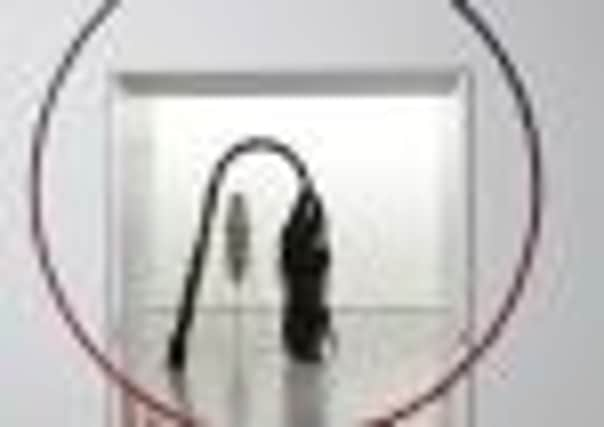Wanderer finds its home with fund’s help


Depicting the plant after which it is named, Wandering Palm is a sculpture composed of patent leather, aluminium and acrylic resin.
There is more to the work than meets the eye, however, as the overall form of the tree is in fact made up of casts of everyday objects. The work came into the Hepworth Wakefield’s collection in 2011 with Art Fund assistance and a grant from the Contemporary Art Society after featuring in a solo show of the artist’s work at the gallery, titled Eva Rothschild: Hot Touch.
Advertisement
Hide AdAdvertisement
Hide AdRothschild’s work recalls the work of Minimalist artists of the 1960s and 70s such as Eva Hesse, and works in a variety of unusual sculptural media, as well as video.
Her works frequently make use of crystalline geometric forms, and are particularly concerned with the way in which objects gain meaning or religious connotations, beyond what their materials alone suggest.
Her work has been exhibited at the South London Gallery, the Baltic Centre for Contemporary art in Gateshead, and at Tate Britain, where she was the recipient of the prestigious Duveens Commission in 2009. Originally from Dublin, Rothschild studied at Goldsmiths College London and now lives in London.
Wandering Palm itself, according to Rothschild, is concerned with the relationship between the natural and the man-made, prompting questions about where the limits of these two lie.
Advertisement
Hide AdAdvertisement
Hide AdThe organic form of the tree is rendered into an artificial, industrial product. Its trunk is made up of tyres and rolls of tape, recasting everyday materials into new and unfamiliar forms. The glistening patent leather leaves seem more like an oil slick than swaying fronds of greenery. The casting and moulding involved in producing such a work recalls Barbara Hepworth’s own working method, which means the piece is well-suited to joining the gallery’s permanent collection.
Wandering Palm was acquired with the help of the Art Fund, the national fundraising charity for art across the UK. Though temporarily not currently on view, the work was the first contemporary art acquisition made by The Hepworth Wakefield since its opening last year, and sits at the heart of a rotating programme of display of work owned by the museum.
Wandering Palm was one of a series of works specially created by the artist for Hot Touch, her exhibition at the Hepworth’s opening.
The buyers negotiated a 20 per cent discount on the £35,000 asking price, and the £28,000 came from contributions from the Art Fund and the Contemporary Art Society with the gallery only having to dip into its own resources to the tune of £1,000.
Advertisement
Hide AdAdvertisement
Hide AdThe Hepworth Wakefield’s collection holds over 5,000 works, including the Hepworth Family gift, a collection of the sculptor’s working models which was also acquired with the Art Fund’s assistance.
The gallery permanently shows the work of Hepworth and has a number of other galleries which rotate exhibitions with new and existing work. Exhibitions currently on show at the gallery include Heather & Ivan Morison, Ben Rivers, David Thorpe and The Black Cloud.
The Art Fund’s supporting role
The Art Fund helps museums and galleries acquire works of art through sales of the National Art Pass which offers free entry to over 200 art galleries, museums and historic houses all over the UK.
The charity receives no state funding, but uses the money collected from membership as well as gifts left to the organisation.
Advertisement
Hide AdAdvertisement
Hide AdThe Yorkshire Post has arranged a special reader offer: buy your National Art Pass today by Direct Debit and get 12 months for the price of nine.
Call 0844 415 4100 or visit www.artfund.org/nationalartpass